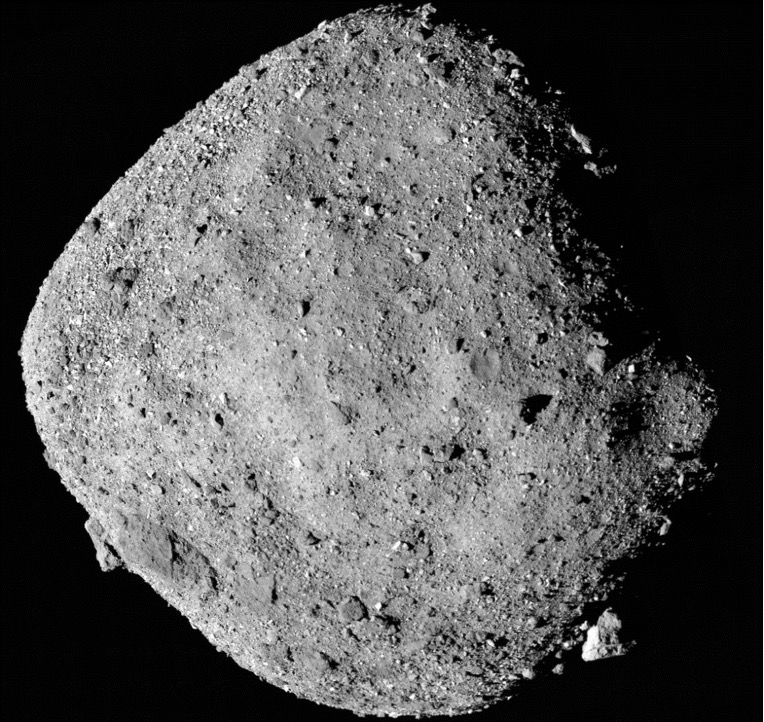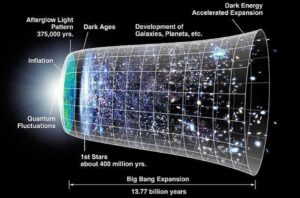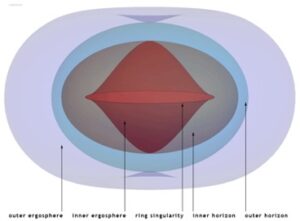
Figure 1: This is a mosaic image of Bennu that was taken by OSIRIS-REx in 2018
Source: Wikimedia Commons
A rock, floating through space, just smaller in length than the Empire State Building, has been the center of attention for the last couple of weeks and for good reason. Bennu, an asteroid with a rough, rocky surface, is thought to have been formed from the fragments of an ancient collision and is currently on a near-Earth orbit. D.S Lauretta, a researcher at the University of Arizona and the Principal Investigator of the OSIRIS-REx mission, categorizes Bennu as a low-albedo B-type asteroid, which is the same category of asteroid as the one that might have first brought terrestrial microbes to Earth (Lauretta et al., 2015). Bennu was chosen as the name for the asteroid during the 2012 “Name That Asteroid!” contest. A third-grade student chose the name in reference to the Egyptian mythological bird, Bennu, because OSIRIS-Rex resembled the heron deity.
In 2016, NASA launched the Origins, Spectral Interpretation, Resource Identification, and Security-Regolith Explorer (OSIRIS-REx) to explore Bennu and eventually return a sample of the asteroid itself. For over two years, OSIRIS-REx orbited Bennu and gathered enough surface data to put together a complete high-resolution mosaic of the asteroid. During this orbital period, however, OSIRIS-REx began to observe particles being ejected from the surface of Bennu. According to researchers at the NASA Goddard Spaceflight Center and the University of Arizona, the ejection of particles may be the result of “exfoliation” of the asteroid’s surface due to diurnal thermal cycling, the variation of surface temperature from exposure solar radiation (Molaro et al., 2020). This thermal cycling provides enough stress to the surface rocks of Bennu to drive thermal fatigue, a deformation and crack growth process, which results in particles being exfoliated from the rocks themselves.
On October 22, however, OSIRIS-Rex lowered itself from its 1-km orbit and was able to Touch-And-Go (TAG) Bennu’s surface, performing perhaps the most expensive “fist bump” of all time, with the entire mission costing close to $800 million USD. To collect the desired samples, OSIRIS-REx emitted a puff of nitrogen gas to stir up the dust and small rocks, launching them into the probe’s storage chamber. OSIRIS-REx is now orbiting Bennu once again and is scheduled to head back to Earth and arrive by 2023 for examination. Analyzing the samples provides an opportunity to uncover the makeup of Bennu, which is thought by Lauretta and many other researchers to be volatile-rich and well hydrated (Lauretta et al., 2019). Another benefit to studying Bennu’s samples and their makeup is eventually being able to determine the most efficient way to deflect or break up any potential asteroids on a crash-course with Earth.
Bennu has the potential to influence how we live on Earth. The samples that are obtained from OSIRIS-REx are imperative to the human race as a whole because the same rock that we “TAGged” this year is predicted to TAG Earth sometime in the 22nd century (NASA, 2016). While we still have many years before this event, understanding the intricacies of Bennu will not only allow for a greater appreciation of the asteroid but can also potentially save society as a whole if the asteroid’s impact were to be catastrophic.
References
Lauretta, D. S. et al. (2015) The OSIRIS-REx target asteroid (101955) Bennu: constraints on its physical, geological, and dynamical nature from astronomical observations. Planet. Sci.
Lauretta, D.S., DellaGiustina, D.N., Bennett, C.A. et al. (2019) The unexpected surface of asteroid (101955) Bennu. Nature (2019). https://doi.org/10.1038/s41586-019-1033-6
Molaro, J. L., Hergenrother, C. W., Chesley, S. R., Walsh, K. J., Hanna, R. D., Haberle, C. W., Schwartz, S. R., Ballouz, R. L., Bottke, W. F., Campins, H. J., & Lauretta, D. S. (2020). Thermal Fatigue as a Driving Mechanism for Activity on Asteroid Bennu. Journal of geophysical research. Planets, 125(8), e2019JE006325. https://doi.org/10.1029/2019JE006325
NASA (2016) 101955 1999 RQ36: Earth Impact Risk Sumary. Jet Propulsion Laboratory https://cneos.jpl.nasa.gov/sentry/details.html#?101955
Related Posts
New ‘Drugless’ Approach to Killing Cancer Cells Shows Promise
Figure 1: Abstract Molecular Model Source: ShutterStock Researchers at Nanyang...
Read MoreAlternative Proposal to the Big Bang’s Singularity Theory: the Hartle-hawking State
Cover: A simulated timeline of the events since the big...
Read MoreMagnetic Reconnection Offers New Insight into Harnessing Energy from Black Holes
Figure 1: Basic architecture of a rotating black hole. In...
Read MoreBrian Lowe



